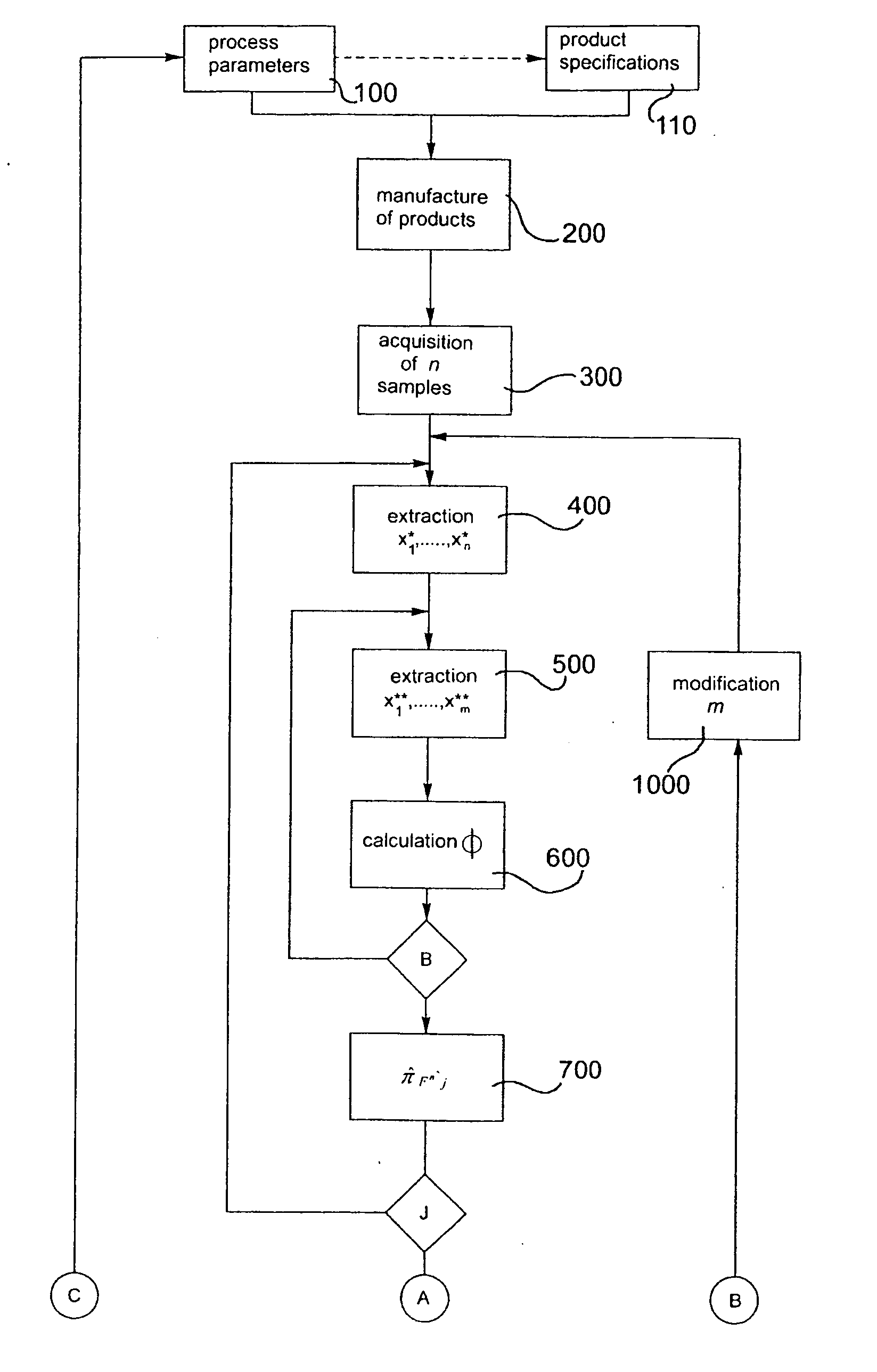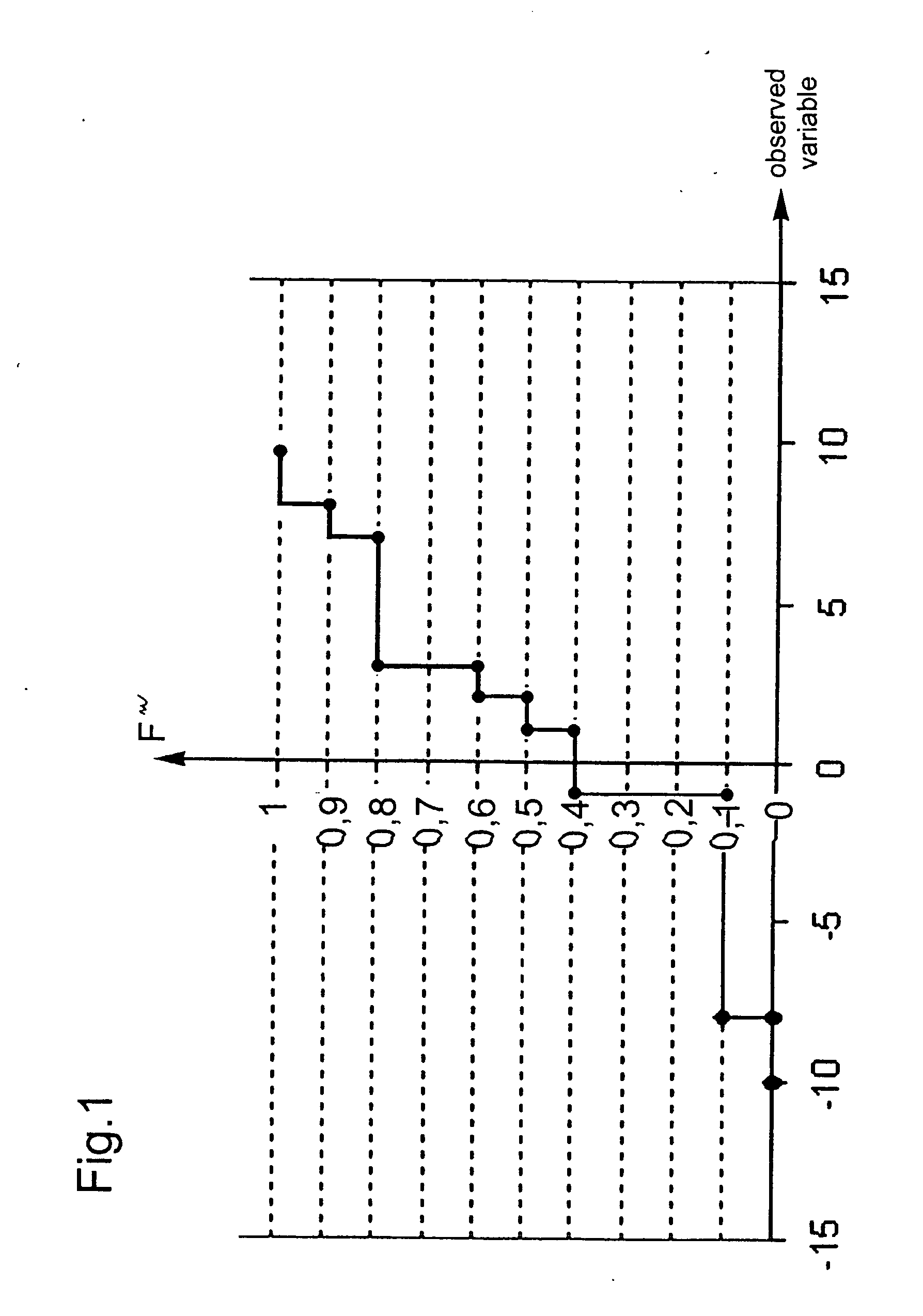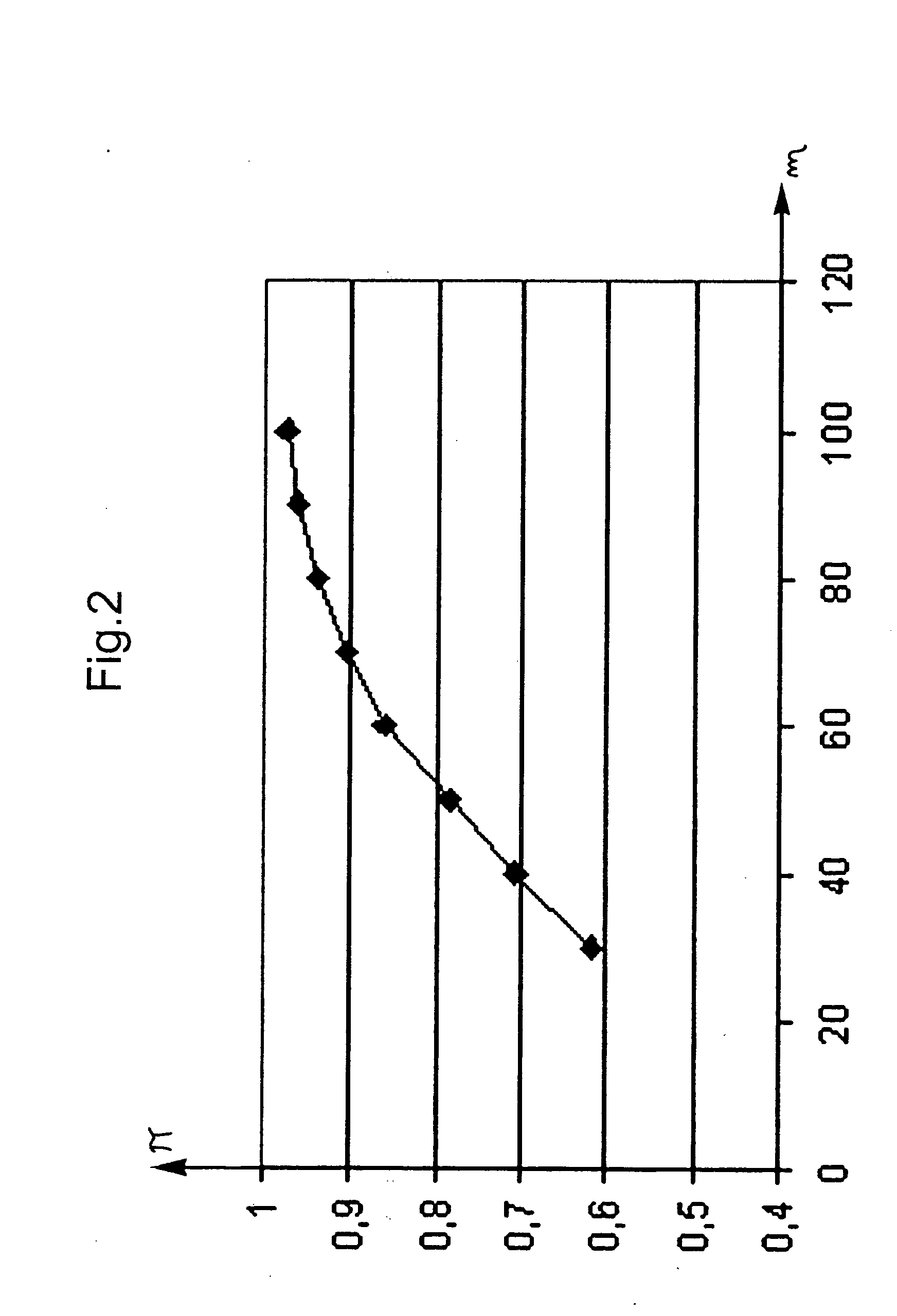Method and system for the statistical control of industrial processes
a statistical control and industrial technology, applied in the field of industrial process control, can solve the problems of not being very reliable, not always easy to find a ci for non-centrality parameters, and methods cannot be applied in the context of statistical tests, so as to minimise research and production costs and avoid waste of resources
- Summary
- Abstract
- Description
- Claims
- Application Information
AI Technical Summary
Benefits of technology
Problems solved by technology
Method used
Image
Examples
Embodiment Construction
[0087] A system for the control of an industrial process includes a processing system associated with the production line, such as for example an electronic processor or work station arranged for receiving a series of sample data, that is the values of one or more selected observed variables which are indicative of the properties of the product, relating to a sample (which is in the limit exhaustive) of the products obtained from the process, and for generating data for control of the process parameters.
[0088] The sample data may be provided to the processing system by an operator through a user interface, or automatically through transmission via a dedicated communications network from an associated control equipment. This equipment may for example be an equipment measuring physical and / or geometrical quantities of a product drawn from a batch, or, an equipment for control of the process of synthesizing a drug.
[0089] The data received are processed through a calculation algorithm...
PUM
 Login to View More
Login to View More Abstract
Description
Claims
Application Information
 Login to View More
Login to View More - R&D
- Intellectual Property
- Life Sciences
- Materials
- Tech Scout
- Unparalleled Data Quality
- Higher Quality Content
- 60% Fewer Hallucinations
Browse by: Latest US Patents, China's latest patents, Technical Efficacy Thesaurus, Application Domain, Technology Topic, Popular Technical Reports.
© 2025 PatSnap. All rights reserved.Legal|Privacy policy|Modern Slavery Act Transparency Statement|Sitemap|About US| Contact US: help@patsnap.com



